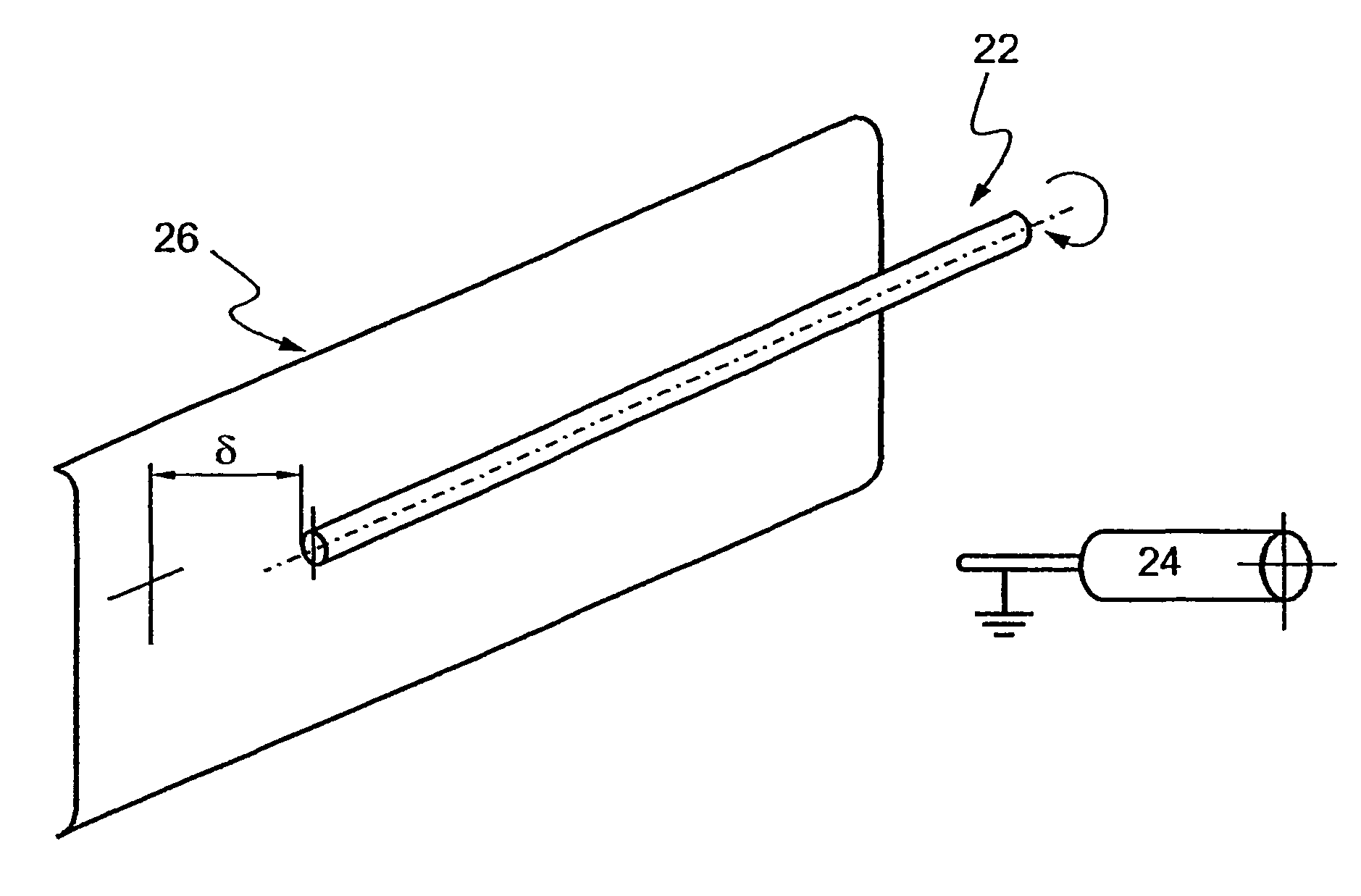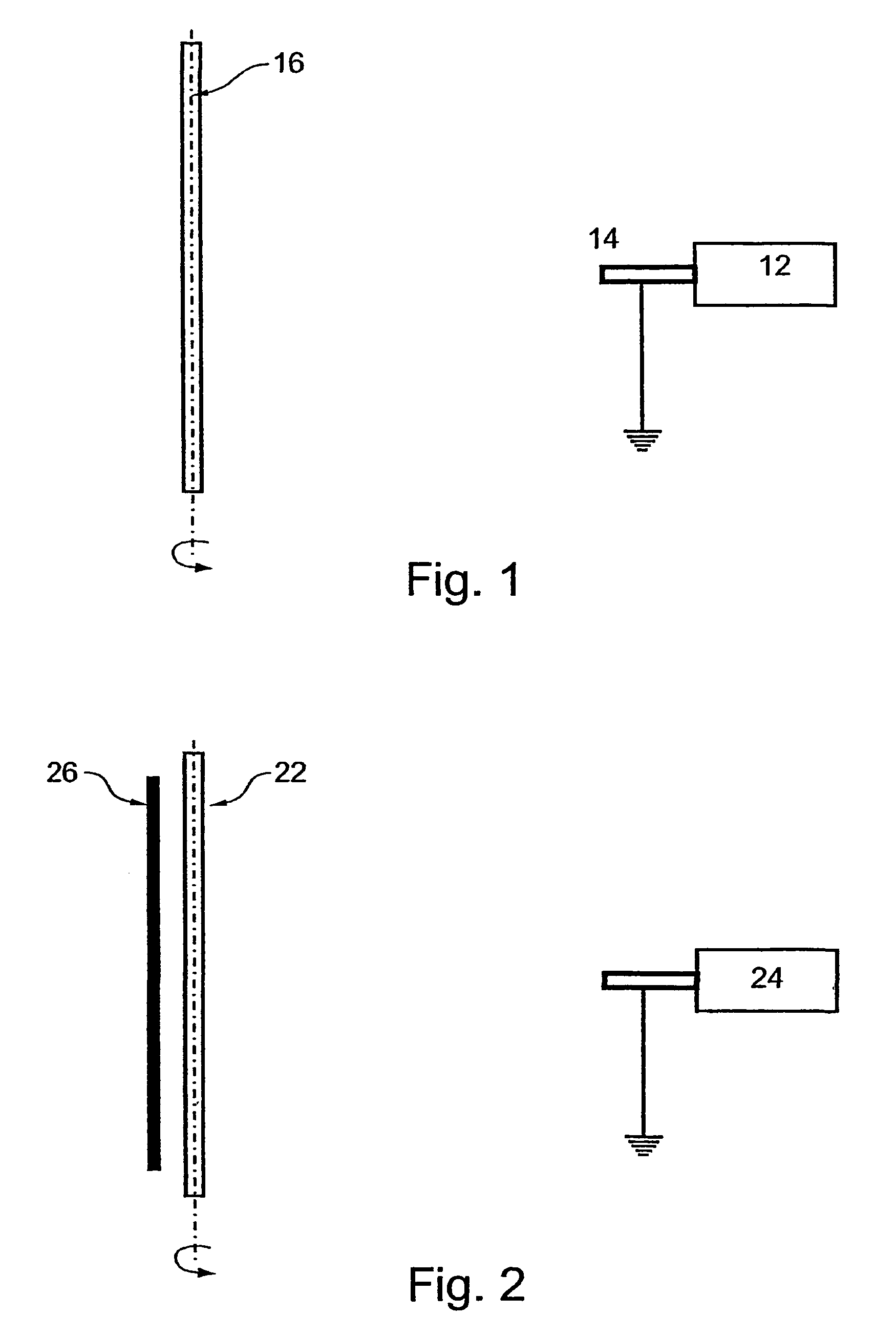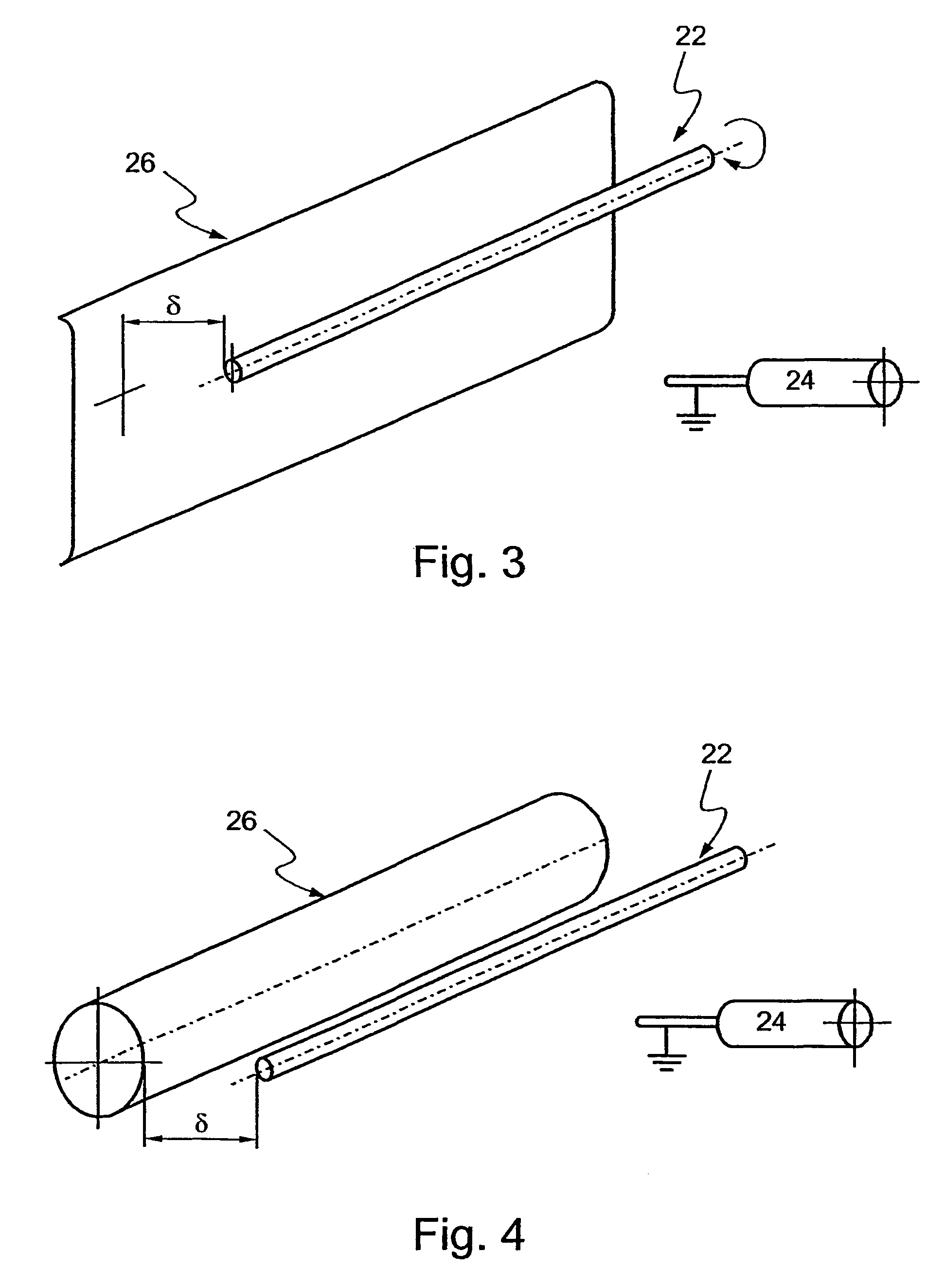Method and apparatus for manufacturing polymer fiber shells via electrospinning
a technology of electrospinning and polymer fiber shell, which is applied in the direction of auxillary shaping apparatus, filament/thread forming, prosthesis, etc., can solve the problems of reduced functionality, reduced mechanical and tensile strength of grafts, and difficult production of polymer fiber shells suitable for use as vascular grafts
- Summary
- Abstract
- Description
- Claims
- Application Information
AI Technical Summary
Benefits of technology
Problems solved by technology
Method used
Image
Examples
example 1
Axial Covering Using Conventional Electrospinning Method
[0112]Reference is now made to FIG. 7, which is an example of non-randomized covering of thin mandrels via conventional electrospinning. A 3-mm cylindrical mandrel was covered by polycarbonate fiber using prior art electrospinning approaches. FIG. 7 is an electron microscope image of the final product, in which axial fiber orientation is well evident. Due to non-uniformities in the electric field, the fibers, while still in motion in the inter-electrode space, are oriented in conformity with the field configuration, and the obtained tubular structure exhibits axial orientation of fibers, and as such is characterized by axial, as opposed to radial strength.
example 2
Random Covering Using Flat Subsidiary Electrode
[0113]An apparatus constructed and operative in accordance with the teachings of the present invention incorporating a flat subsidiary electrode positioned 20 millimeters from the mandrel and having the same potential as the mandrel was used to spin a polycarbonate tubular structure of a 3 mm radius. As is evident from FIG. 8, the presence of a subsidiary electrode randomizes fibers orientation.
example 3
Polar-Oriented Covering Using Flat Subsidiary Electrode
[0114]An apparatus constructed and operative in accordance with the teachings of the present invention incorporating a flat subsidiary electrode positioned 9 millimeters from the mandrel and being at a potential difference of 5 kV from the mandrel was used to spin a polycarbonate tubular structure of a 3 mm radius.
[0115]As illustrated by FIG. 9, reduction of equalizing electrode-mandrel distance results in polar-oriented covering. Thus, by keeping subsidiary electrode and mandrel within a relatively small distance, while providing a non-zero potential difference therebetween, leads to slow or no fiber charge dissipation and, as a result, the inter-electrode space becomes populated with fiber which are held statically in a stretched position, oriented perpendicular to mandrel symmetry axis. Once stretched, the fibers are gradually coiled around the rotating mandrel, generating a polar-oriented structure.
PUM
| Property | Measurement | Unit |
|---|---|---|
| diameter | aaaaa | aaaaa |
| diameter | aaaaa | aaaaa |
| diameter | aaaaa | aaaaa |
Abstract
Description
Claims
Application Information
 Login to View More
Login to View More - R&D
- Intellectual Property
- Life Sciences
- Materials
- Tech Scout
- Unparalleled Data Quality
- Higher Quality Content
- 60% Fewer Hallucinations
Browse by: Latest US Patents, China's latest patents, Technical Efficacy Thesaurus, Application Domain, Technology Topic, Popular Technical Reports.
© 2025 PatSnap. All rights reserved.Legal|Privacy policy|Modern Slavery Act Transparency Statement|Sitemap|About US| Contact US: help@patsnap.com



